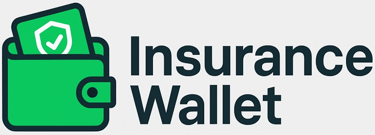Types of Hazards and Their Impact on Premiums
🌟 Introduction
Insurance companies don’t charge everyone the same premium.
Why? Because some situations are naturally riskier than others.
Two houses may look identical from outside —
but if one has old wiring, no fire extinguisher, and careless occupants, it carries more risk.
That’s where hazards come in.
Hazards play a huge role in deciding how much premium a customer pays.
🔍 What Is a Hazard?
A hazard is anything that increases the chance of a loss or makes the loss more severe.
Hazards do not directly cause the loss —
they simply make the environment more risky.
Think of hazards as “risk boosters.”
🔥 Types of Hazards
Hazards are generally grouped into four types in insurance:
1️⃣ Physical Hazard
These are physical conditions that increase the likelihood of a loss.
✅ Examples
Old or faulty electrical wiring
Poor building construction
Overloaded power sockets
Worn-out tyres on a car
Flammable liquid stored in a shop
💡 Impact on Premium
More physical hazards = higher premium or even policy rejection
because the chance of actual damage is higher.
2️⃣ Moral Hazard
This relates to a person’s honesty or intention.
A moral hazard exists when someone may deliberately cause loss or exaggerate it for financial benefit.
✅ Examples
Burning own property to claim insurance
Intentionally staging a car accident
Hiding facts or lying in the proposal form
💡 Impact on Premium
Companies monitor moral hazards strictly.
Suspicious proposals may face:
Higher premiums
Detailed investigation
Proposal rejection
Trust matters in insurance — a single fraud affects everyone’s premiums.
3️⃣ Morale Hazard
This is carelessness or indifference because someone knows they are insured.
Not cheating — just careless thinking like:
“Insurance will take care of it anyway.”
✅ Examples
Leaving car unlocked casually
Driving carelessly because the car is insured
Not installing safety systems in a store
Being negligent about health after buying health insurance
💡 Impact on Premium
Policies where morale hazard is high (like motor insurance) may have:
Higher premiums
Conditions deductibles
Mandatory safety requirements (seatbelts, airbags, CCTV, etc.)
Insurance rewards responsibility, not negligence.
4️⃣ Legal Hazard
This relates to laws, legal environment, and regulation that may increase claim amounts.
✅ Examples
Strict consumer laws increasing claim payouts
Court trends favoring higher compensation
Regions known for high liability awards
💡 Impact on Premium
When laws or courts tend to support bigger settlements, insurers charge more to cover stronger legal liability.
🎯 How Hazards Affect Premiums
In simple words:
More hazards → higher probability of claims → higher premium.
Insurance companies do not like uncertainty.
If they detect more danger, more risk, or more potential fraud — the premium goes up.
They may also impose conditions like:
Fire alarms and extinguishers
Medical check-ups
Security cameras
Anti-theft devices
Deductibles
Loadings due to occupation or environment
Hazards don’t just raise premiums — sometimes they may lead to policy rejection.
🌱 A Real-Life Example
Two restaurants apply for fire insurance:
🍽️ Restaurant A
Fire extinguishers installed
Staff trained in safety
Wiring maintained regularly
CCTV installed
🍽️ Restaurant B
Uses gas cylinders carelessly
No safety equipment
Overloaded electrical circuit
Records of previous minor fires
Who pays lower premium?
Restaurant A, because hazards are controlled.
💡 Advisor Tip
Always educate customers:
“Insurance premium depends not just on what you insure,
but how safely you maintain it.”
If clients reduce hazards, they save premium — and reduce future losses.
✅ Quick Recap
Physical hazards = unsafe conditions
Moral hazards = dishonest intention
Morale hazards = careless attitude
Legal hazards = laws increasing claim cost
Higher hazards = higher premium
Insurance rewards people and businesses that manage risk responsibly.
